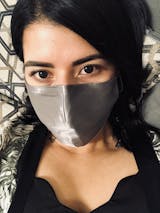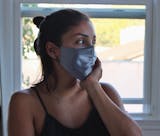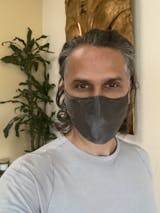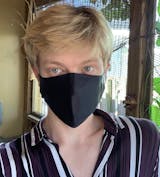Coming into Summer, we'll be spending a lot more time outdoors enjoying the warmer weather, which means more exposure to the sun. The sun causes the most damage to our skin out of all of the elements, which is why we wear sunscreen. But are you using sunscreen correctly?
As a kid in Australia, it was drilled into us how and why we need to be "sun smart" from an early age. This is because 80% of our population lives in coastal areas, and most of us would spend most seasons on the beaches, soaking up the sunshine.
Even with all of our sun-smart knowledge, Australia tops the list for the highest melanoma rate in the world — followed by New Zealand. This is primarily because both countries were colonized by the inherently pale-skinned British. The men and women of the first fleets were not genetically prepared for the harsher sunny climate of the Southern Hemisphere.
That's not to say that people with darker skin are impervious to skin cancers. Nobody, not even our black brothers and sisters, is exempt from skin cancer.
Not All Sun Exposure is Bad
While we've always known to slather on sunscreen, wear a hat, and cover our bodies in clothing, it's not entirely detrimental to be out in the sunshine. Not if you're being sun-smart, anyway.
Our planet needs the sun to exist. Without it, Earth would be a lifeless ball floating through space. Warmth, weather patterns, and energy from the sun are all imperative to the existence of life on Earth.
It isn't just the planet that relies on sunlight to exist. Humans also need to have exposure to the sun. Not to the point of getting burnt, but we need it to maintain our health.
Take vitamin D, for example. If we have too little exposure to the sun, we can become deficient in vitamin D.
Why is Vitamin D Important?
Vitamin D is a critical and essential nutrient.
- It helps our bodies to absorb calcium;
- Regulates our bodies' phosphate absorption;
- It helps strengthen our immune system;
- It keeps our mood elevated;
- It strengthens our muscles and bones — reducing the risk of osteoarthritis and osteoporosis.
People who work indoors, live in cities where buildings block the sunlight, or live in countries where the sun is not as visible some parts of the year are reportedly more prone to depression due to vitamin D deficiencies.
Health professionals recommend getting at least 30 minutes of direct sunlight a day, three times a week, to maintain healthy vitamin D levels. But this varies depending on your specific skin type, lifestyle, where you live, and what season it is.
People in Norway, for example, cannot make vitamin D between October and March due to the Winter season. People in Boston, USA, also struggle between November and February. But it's estimated that 42% of all Americans have a deficiency in vitamin D, even those living in sunnier states.
Solariums and tanning beds have been popular to supplement vitamin D deficiency. However, solariums have been banned in some countries or for those under 18. When a person receives a hefty dose of UV rays in a short amount of time — such as using a tanning bed — it increases the likelihood of developing skin cancer.
Interestingly, people with darker, more tannable skin are more prone to vitamin D deficiency than their light-skinned counterparts. This is because they already naturally possess a higher amount of melanin (skin pigment), making their bodies less efficient at producing it. So even darker-skinned people must get their daily dose of vitamin D.
Rays of Sunshine
Let's quickly go over the different kinds of rays emitted from the sun.
Visible Light: These are the rays we can see with our naked eye, making up around 50% of the overall rays. Part of the visible rays is called HEVIS/HEVL (high energy visible light), which are, you guessed it, high-energy sun rays.
Ultraviolet (UV) Light: These are around 5% of the sun's rays. UVA rays are less intense than UVB rays, but there is 30 to 50 times more UVA than UVB rays. UVA light is also present at all times during the day, whereas UVB varies throughout the day, with its peak at noon. There is also UVC light - but it cannot make it through the Earth's atmosphere.
Infrared Light: the other 45% of rays are Infrared A & B light rays.
HEVIS, UVA, and UVB rays can cause skin stress or cancers. We'll go into more detail about these a little later.
Who Can Get Skin Cancer?
As stated previously, people with light skin are more prone to skin cancers. It's not because the sun picks on pale people.
It isn't sunshine that causes sunburn; it's the invisible UV rays. And no matter the weather, you can always get burnt—even on a cloudy day.
Furthermore, people with darker skin have more melanin, protecting them from burning faster. That's why it takes a darker-skinned person longer to tan—or burn—and get their daily dose of vitamin D.
When getting a skin cancer screening, the doctor asks whether you've experienced any severe sunburn before turning 18. Children who have had severe sunburn are more prone to developing skin cancers later in life. So if you have children, please remember to cover their skin with sunscreen, a hat, and clothing at all times.
Any level of sunburn can develop into cancerous cells, no matter your complexion.
Types of Skin Cancers
There are three kinds of skin cancers caused by sun exposure:
Basal cell carcinoma
Squamous cell carcinoma
Melanoma
95% of skin cancers are basal or squamous and are highly treatable. On the other hand, melanoma develops in the melanocytes (skin pigment cells) and can spread to other parts of the body if left untreated.
Over 7000 people in the US die from melanoma each year, and this number is expected to rise.
More Than Just Skin Cancer
Another reason we need to be diligent when we are outside is, the sun can cause damage to our skin on a cellular level. Sunburn, premature aging, hyperpigmentation, and sun allergies are all symptoms of sun damage. Out of the different light rays that come from the sun, three of them cause damage to our skin.
UVA rays are what cause sunburn and surface conditions, such as pigmentation. On the other hand, UVB rays can penetrate much deeper into the skin, infecting the cells with diseases. These are the rays that cause skin cancers.
HEVIS rays, like UVB rays, can also penetrate deeper into the skin. They can cause oxidative stress and generate free radicals, which ultimately cause damage to the cells. Hello, premature aging!
Antioxidants can aid in neutralizing potentially harmful oxidative molecules before they have a chance to do any harm. However, prevention through sun-safe practices is always preferable for your skin's health.
Ways to Prevent Sun Damage
As an adult, I have watched many people apply sunscreen to themselves and their children. When I first moved to the US, I found it surprising that the rules I learned growing up were not common knowledge. But I forget that not every city or town is near the ocean or ski lodge.
However, it is essential to practice sun safety no matter where you're from. We've all vacationed at the beach or in the snow before, and all it takes is for one bad sunburn to trigger potential skin cancers.
So What Are The "Rules" to Staying Sun-Smart?
Wear a Hat. Approximately 30% of melanomas appear on the head and neck. Protect your head with a wide-brimmed hat whenever possible.
Wear Sunglasses. We can get growths on our eyeballs, called pinguecula if we overexpose them to the sun. While not cancerous, they can be unsightly. Getting some UV400 sunglasses will protect your eyes from UVA and UVB rays.
Wear Protective Clothing. Wearing collared shirts is a great way to keep the rays off your neck. Even if you're swimming, you could wear a rash guard to prevent sunburn. Children should especially wear one to protect their skin from burning.
Avoid Hottest Times. Between 10 am and 4 pm, the sun's rays are at their peak strength. So if you can avoid being out in the sun at those times, try and do so.
Wear Sunscreen. This one is a no-brainer. Most of us will wear sunscreen at the very least when we go out in the sun. But the problem is not in getting people to wear sunscreen. It's getting people to wear it properly.
Proper Sunscreen Application
You may be surprised to know that you're likely not wearing sunscreen properly.
How to use sunscreen the most effectively:
- Apply 30 minutes before you go outside;
- Apply it liberally:
- Face, use ½ a teaspoon.
- Body, use a full shot glass.
- Reapply every 2 hours—or even more often if you're swimming;
- SPF 15 or higher is ok for people with a darker complexion, but SPF 30+ is preferred and best, especially for children and pale skin.
Types of Sunscreens
There are two types of sunscreen: physical and chemical.
Physical sunscreens are typically thicker and whiter in their consistency — although the science behind physical sunscreens is constantly improving, so you may find this is not the case with many.
They are made with zinc oxide and/or titanium oxide, which are particles that sit on top of the skin and reflect UV light while absorbing UV radiation.
Physical sunscreens can be less irritating for the skin, which could be a better option for sensitive skin.
Chemical sunscreens are the most common sunscreens that your mom would have used on you as a kid. They contain active sun filters that absorb UV light to prevent them from absorbing into the skin. Formulations are usually lightweight but can cause skin irritation. Dated formulations have also caused some concern over the free radical damage they can potentially cause.
Another issue is, some ingredients found in chemical formulations—oxybenzone and octinoxate—cause reef damage. Hawaii has banned these two ingredients for sale as a result.
Brands have swapped oxybenzone and octinoxate for avobenzone, homosalate, and octocrylene, but the results are no better. These ingredients are still not reef safe and can also cause hormone disruption.
So for safer sun protection, a physical sunscreen will be your best bet.
Sunscreen Formulations
When choosing a sunscreen, always make sure it is "broad spectrum." This means it protects from all UV light rays. There are many formulations of sunscreens out on the market today. But which one works best?
Creams/Lotions are the most common type and the most preferable, in my opinion. Whether it be a physical or chemical formulation, the cream consistency will ensure you give your skin the best coverage. For oily skin, look for non-comedogenic creams to avoid clogged pores.
Gels are great if you have oily skin. However, cream will always be better for longer-lasting sun protection. You may also need to apply this more liberally to get the same level of coverage as a cream.
Sprays are popular, but a study revealed that people who use spray sunscreen use a quarter of the recommended amount. If possible, avoid using sprays—especially on children. Aerosols are also not environmentally-friendly.
Sticks are usually thicker and longer-lasting. They work great for smaller areas, like the face and shoulders. They're also usually zinc oxide mineral sunscreen. Opt for a non-nano zinc oxide mineral stick, as the zinc particles are too large to absorb into the skin.
Adding SPF in Your Regime
It's essential to wear SPF, especially if you're going to be outside. There are a few options for adding one to your skincare regime. Here are some options:
Physical sunscreen: because these contain particles that reflect light, it's essential to add these to your regime as a last step. Adding a moisturizer on top will only hinder the sunscreen's effectiveness.
Chemical sunscreen: if you choose to wear chemical sunscreens, apply them before your moisturizer. Chemical sunscreens need to absorb into the skin. If you moisturize first, it will act as a barrier and stop the sunscreen from absorbing.
Moisturizer with SPF: this is a popular option for those who don't want another step in their regime. It also takes the guesswork out of when you should apply sunscreen, as it's always the final step in your regime.
SPF Additive: Earthwise Beauty has formulated a fantastic product, Farizads Veil Sun Reflector. It's non-nano uncoated zinc oxide in powder form so that you can mix it in with your favorite moisturizer. It works by reflecting both UVA & UVB rays.
If you're not using an SPF in your daily regime, you should consider starting now. It can be as simple as adding one to your regime, or you can replace your moisturizer with one with SPF.
Our pick is Honua Skincare's Malu Day Cream SPF 30. It contains broad-spectrum zinc oxide with natural skin protectants sourced locally in Hawaii. Not only that, but it is 100% reef-friendly, which is something we love to see!
Emma Masotti is an Australian now living in Austin, TX, and has been a trained esthetician for over 15 years. She is a sustainable skincare writer, educating and building awareness around proper skin health that doesn't cost the Earth.
Some of the products promoted in our blog are from our online store. Many others are brands we have researched and found to be great examples of sustainable, ethical, and innovative brands in their field, and we don't make any profit from mentioning them in our blog. #CollaborationOverCompetition
Emma Jade has been a trained esthetician for over 15 years. She is a sustainable skincare writer, educating and building awareness around proper skin health that doesn't cost the Earth.
Some of the products promoted in our blog are from our online store. Many others are brands we have researched and found to be great examples of sustainable, ethical, and innovative brands in their field, and we don't profit from mentioning them in our blog. #CollaborationOverCompetition










